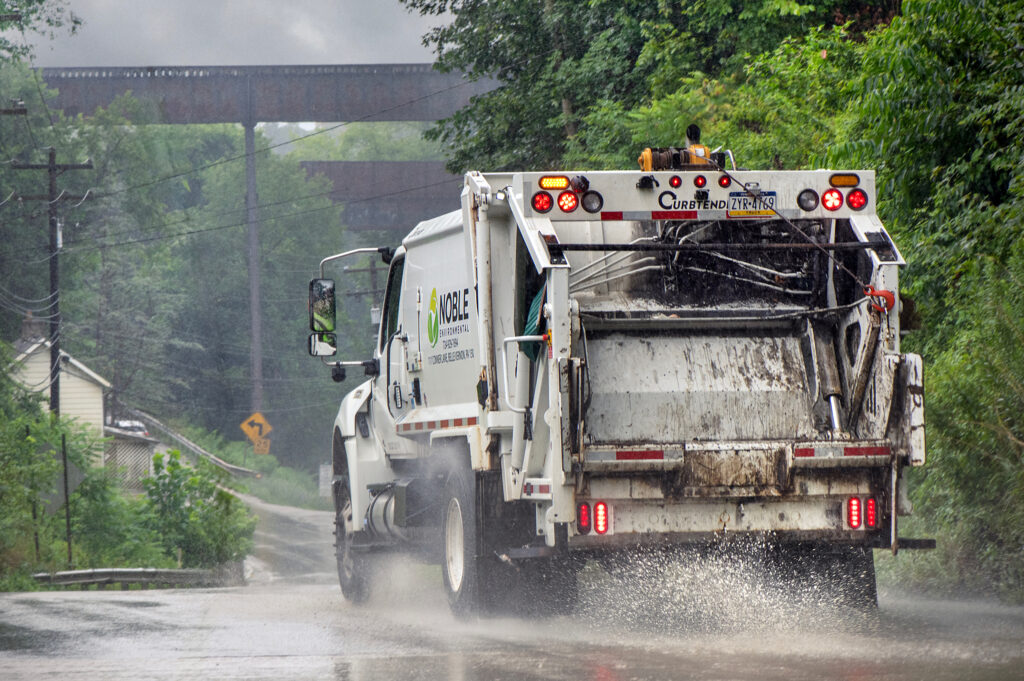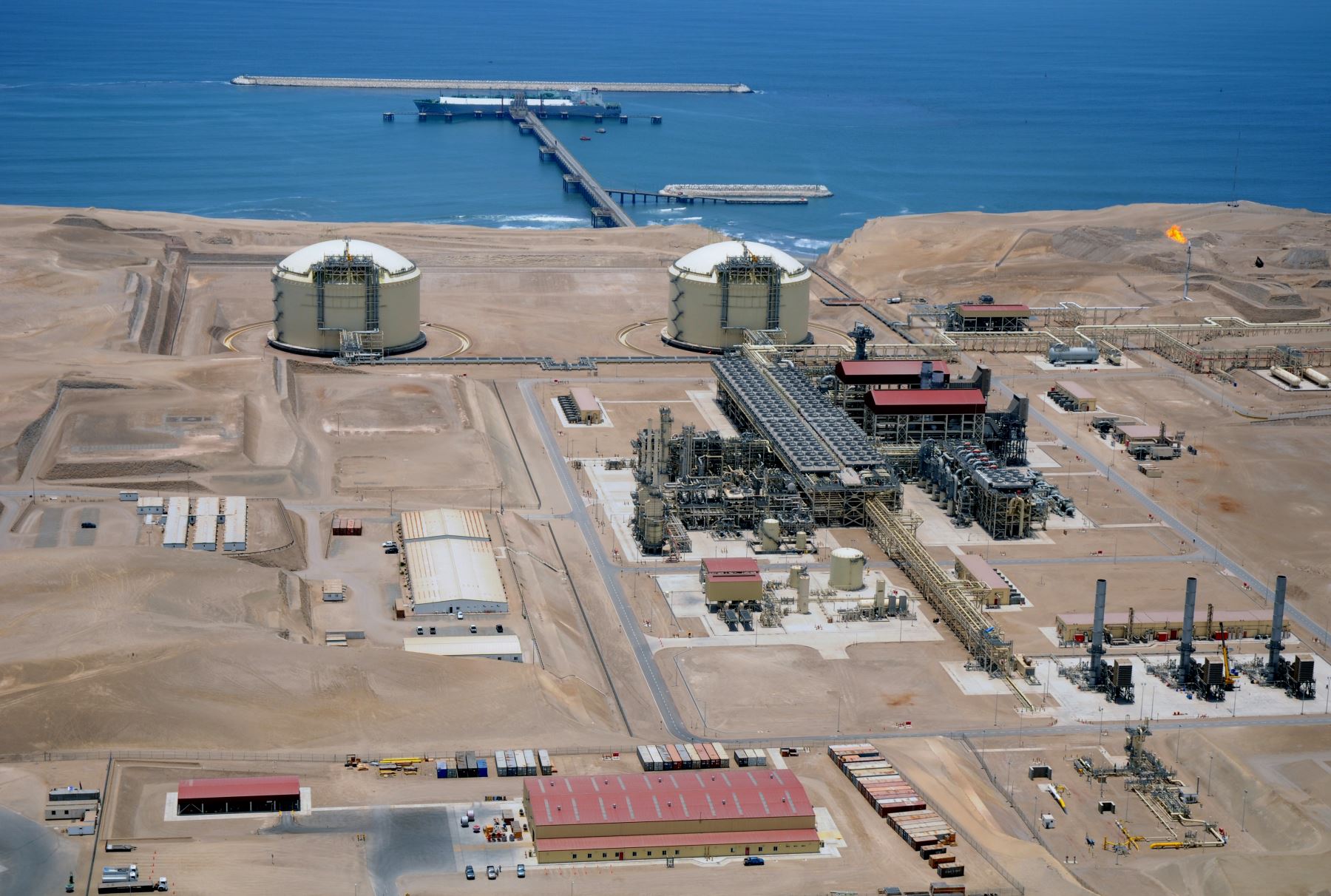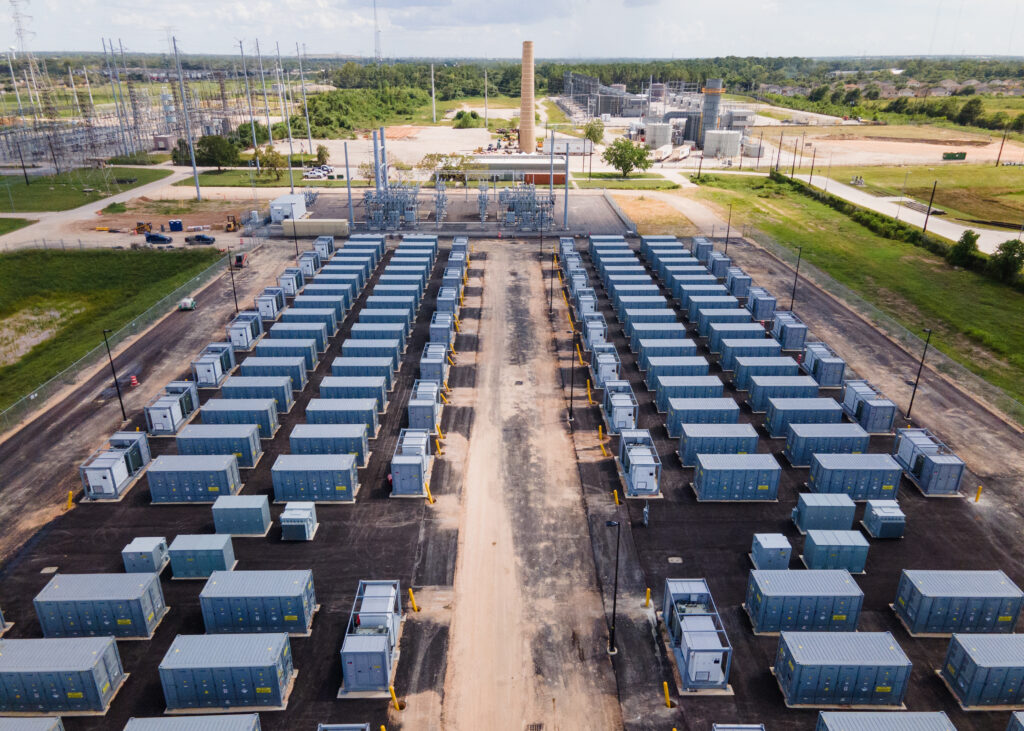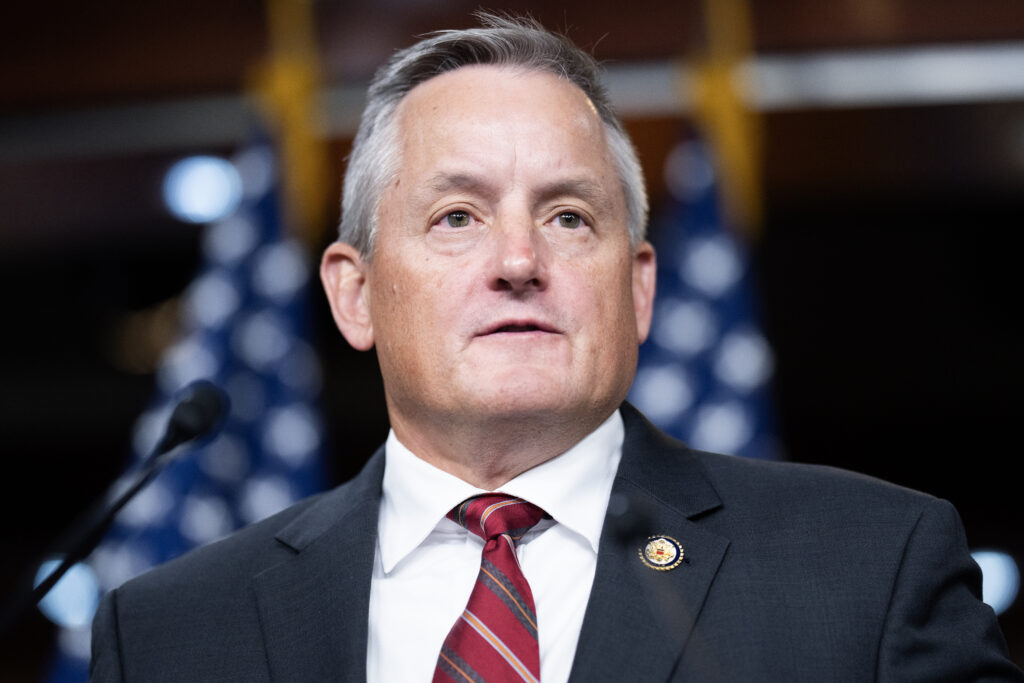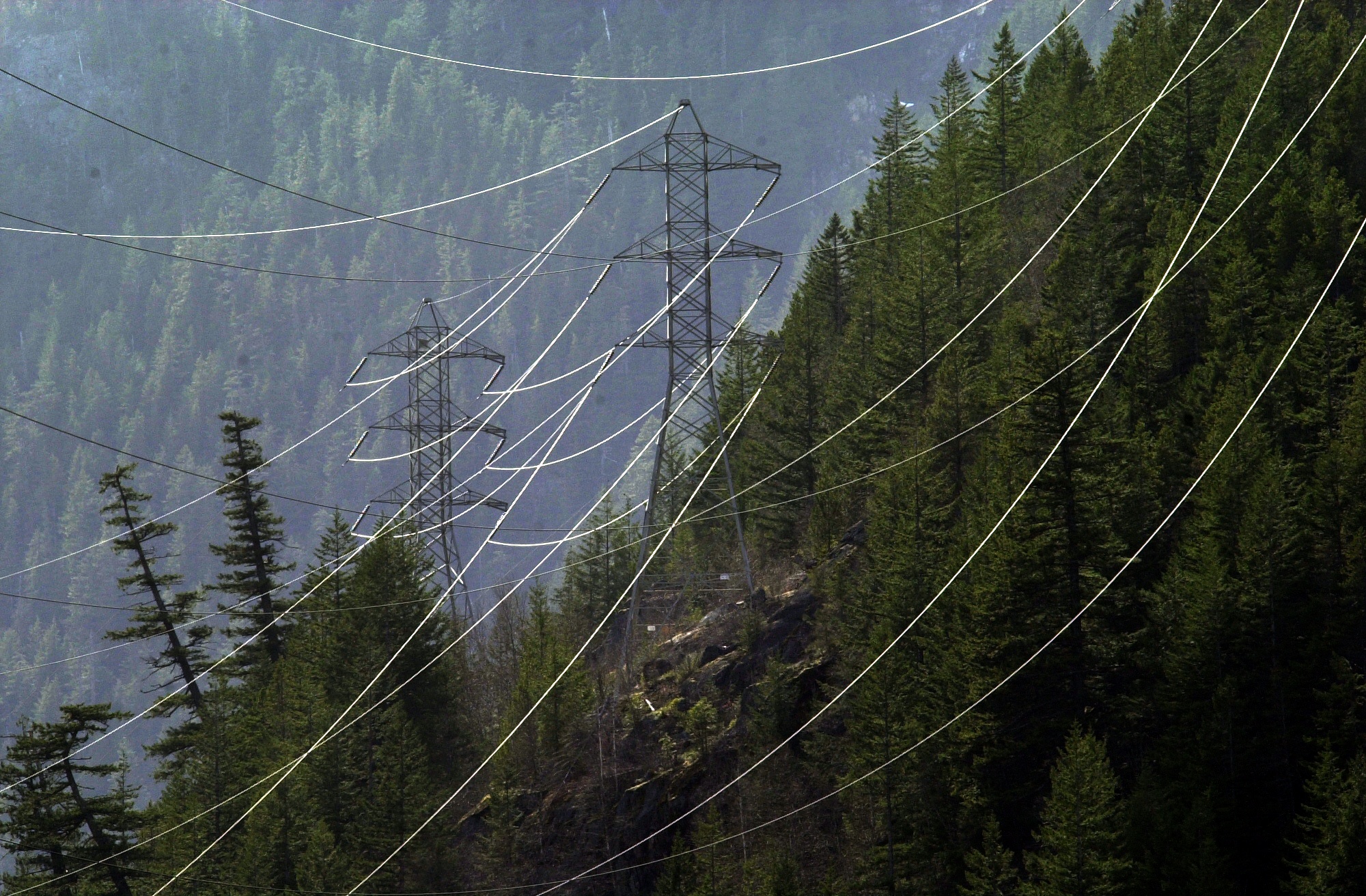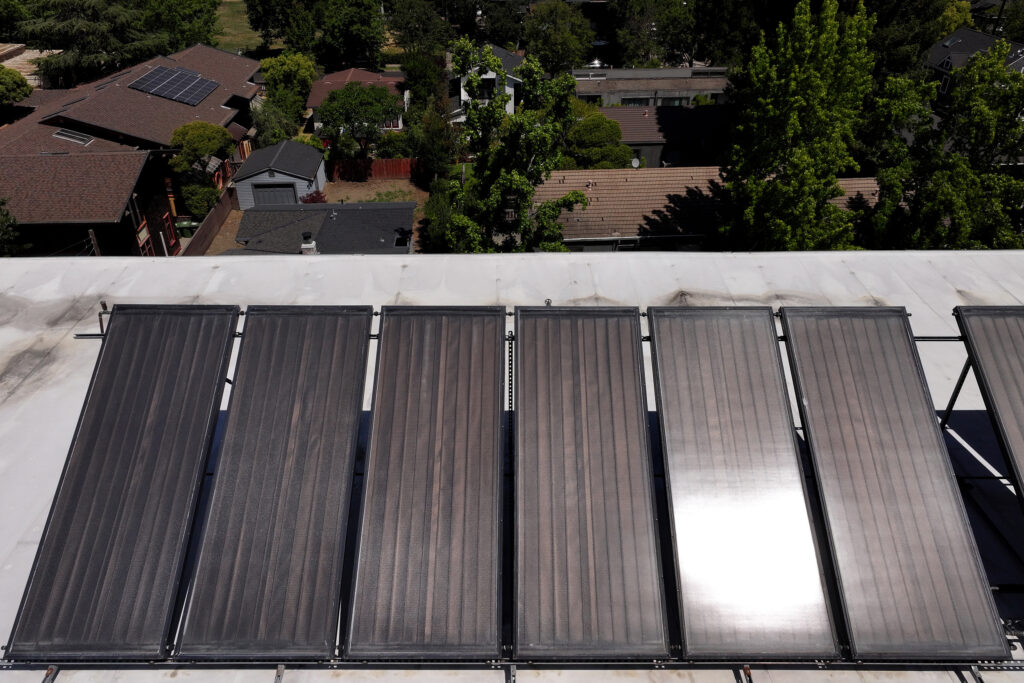Electricity rates are on the rise across the country, but nowhere has the increase been more precipitous than in California, where average residential rates surged 47 percent from 2019 to 2023, and are now twice as high as the national average.
Experts point to increased utility spending on wildfire safety and recovery measures, distribution infrastructure and to a lesser degree, clean energy programs, as some of the reasons for skyrocketing power prices in the state.
But recent analyses also show another trend—a growing gap between the rates charged by investor-owned utilities and those of publicly owned electricity providers. That’s happening in many regions of the country, but especially in California, where average rates for the investor-owned utilities Pacific Gas and Electric (PG&E), Southern California Edison (SCE) and San Diego Gas and Electric (SDG&E) rose between 48 and 67 percent during that same four year period. Their rates are over 50 percent higher than average rates for municipal utilities like the Los Angeles Department of Water and Power (LADWP) and the Sacramento Municipal Utility District.
Frustrated with their investor-owned utilities, a number of communities across the country have pushed for municipal takeovers in recent years. Initiatives to buy out private electric companies failed at the ballot in Maine and San Diego in 2023 and 2024, but Ann Arbor, Michigan, is building its own utility to operate alongside its private provider with the hope that public ownership will lead to more efficient service, a faster transition to renewable energy and lower bills.
In California, while the days of Gov. Gavin Newsom and powerful state lawmakers calling openly for a state takeover of Pacific Gas and Electric may be over, calls for public buyouts continue. In Ventura County, supervisors voted in January to look into creating a not-for-profit municipal utility to replace Southern California Edison, citing repeated power outages and a lack of communication. And Thursday, the California Public Utilities Commission (CPUC) voted to set the ground rules for an independent assessment of what it would cost for San Francisco to take over a portion of PG&E’s grid, a vision city officials have continued to pursue since the company rejected their $2.5 billion offer in 2019.
“Public power is simply more affordable,” said John Cote, a spokesperson for the San Francisco Public Utilities Commission, a public utility that provides power for portions of San Francisco and would operate the PG&E grid if the city took it over.
Ownership models aren’t the only reason investor-owned utility rates are higher than municipal ones in California, but they certainly play a role, said Ruthie Lazenby, co-author of a June Pritzker Environmental Law and Policy Brief from UCLA that broke down what Californians stand to gain, and lose, from public buyouts.
“Investor-owned utilities are motivated by profit,” said Lazenby, who worked on the report while a fellow at UCLA and is now an energy attorney at The Utility Reform Network, a ratepayer advocacy group. “They have an incentive to overspend.”
Both public and private utilities charge customers for the electricity they use as well as for the costs of maintaining and upgrading the grid and borrowing money to build it out. But while public utilities use municipal bonds, with interest rates of 4 to 5 percent, to raise money for grid projects, investor-owned utilities raise money through a mix of higher-interest bonds and borrowing money from shareholders who receive returns of up to 10 to 11 percent. IOUs also pay taxes on the profits they earn, while municipal utilities are not taxed on revenue (although some, like LADWP, pay into their cities’ general funds to replace the lost tax income).
These differences, according to the Pritzker report, result in large savings for publicly-owned utilities. The report also notes that while public utilities, structured as non-profits, are not immune to revenue pressures, IOUs have a particular incentive to overspend on capital projects. That’s because they’re required to maximize returns to shareholders, and their profits come from building new infrastructure, where they earn a rate of return, rather than repairing and maintaining existing equipment.
Like in other parts of the country, ratepayer advocates have criticized California’s utility regulator, the CPUC, for approving what some experts say are excessive rates of return on equity for investor-owned utilities.
“The regulators are very structurally disadvantaged,” said Mark Ellis, a former California utility executive who argues for lowering the allowed return on equity to bring down bills. “They don’t have the time, resources and information to hold [utilities] to account.”
Publicly-owned utilities are generally more resource-constrained and lack the incentive to overinvest. But higher spending by IOUs cannot be explained by the profit motive alone, said Lazenby, as some of the challenges facing the state’s investor-owned utilities would exist regardless of their ownership models.
Take the difference in their service territories. In California, publicly-owned utilities generally exist in denser, urban areas where the cost of service tends to be cheaper and the risk of wildfire lower. Private utilities cover much larger, more diverse regions, including unincorporated areas and rural areas, where it’s harder and more expensive to connect people to power, and where wildfire risk is higher.
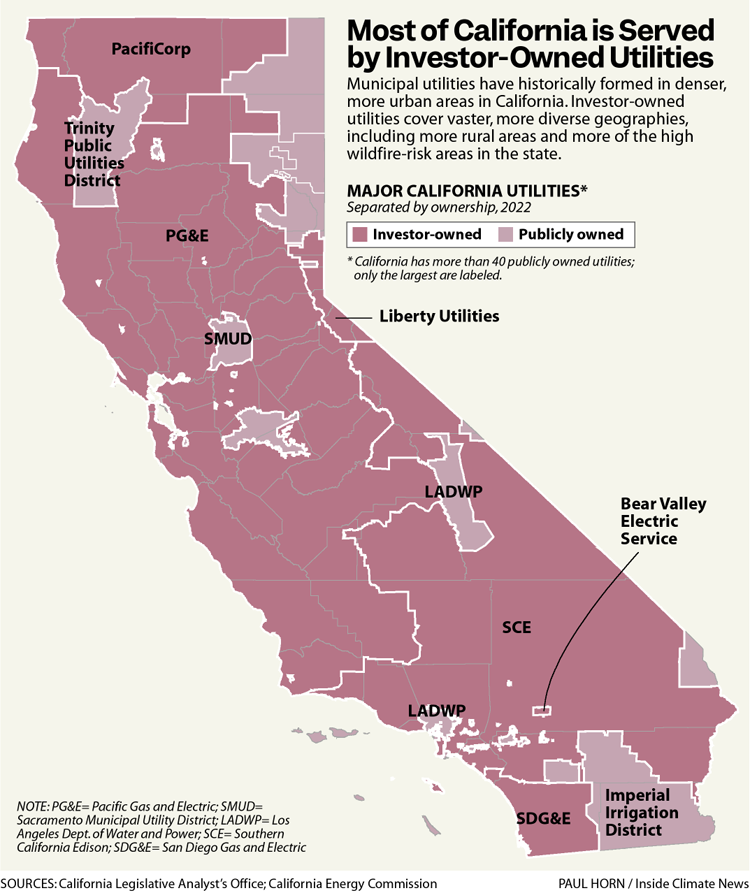
From 2019 to 2023, as the planet warmed, the CPUC started requiring more wildfire mitigation plans and companies sought to reduce their liability after a devastating series of utility-sparked wildfires, the three big private utilities in the state, PG&E, SCE and SDG&E, drastically ramped up their spending. Wildfire-related costs went up by $27 billion, from 1.7 percent of customer bills in 2019 to 17 percent in 2023. That included spending on capital projects as well as on grid operations and maintenance, which, in PG&E’s case, has increased more than two-fold since 2018. While some question whether all that spending was justified, there’s no question that the big three have to address a higher level of risk.
Publicly-owned utility wildfire plans tend to be much less intensive and cheaper, according to the Pritzker brief, and, unlike IOUs, they also don’t pay into the state’s wildfire fund to reimburse damages for utility-caused fires.
“On wildfire, the issue is both territory served and investment in mitigation because of risk,” said Michael Wara, director of the climate and energy policy program at Stanford University, in an email. “IOUs are significantly ahead of most (but not all) POUs that serve high risk territory. And being ahead is expensive.”
Publicly-owned utilities in California have also spent less when it comes to meeting climate targets and other social goals, which is one reason why they’ve underperformed on climate historically.
“The divergence between IOU rates, including SCE, and those set by public utilities, is largely due to the disproportionate impact of state mandated programs on IOU customers,” said SCE spokesperson Gabriela Ornelas, citing an analysis by the California Chamber of Commerce. Wildfire mitigation, renewable energy requirements, public purpose initiatives and the solar cost shift “represent nearly 30 percent of the typical IOU customer bill, compared to about 21 percent of a typical POU bill,” she said.
The solar cost shift refers to the transfer of grid maintenance costs from solar to non-solar customers that occurs when IOUs credit rooftop solar owners for the power they send back to the grid. According to the CPUC, the shift accounts for 12 to 19 percent of non-solar customer bills. Some POUs also compensate rooftop solar customers, but they structure their rates differently, and “rooftop solar penetration rates in investor-owned utility territories are significantly higher than for most municipal utilities,” said Terry Prosper, a spokesperson for the CPUC.
Public and privately-owned utilities both have to source 60 percent of their electricity from renewable sources by 2030 and be 100 percent carbon-free by 2045, in line with the state statutes, but enforcement is stricter and more prescriptive for private utilities.
An October report from Denise Grab, Energy Law and Policy Project Director at UCLA’s Emmett Institute on Climate Change and the Environment, digs into the details.
Grab compared rates and emissions for SCE, a private utility, and LADWP, a publicly-owned one, both of which serve the LA area. LADWP, governed by a mayor-appointed board with rates subject to approval by the city council, serves residents of the City of Los Angeles. SCE serves most other cities and unincorporated areas in LA county (in addition to a territory many times larger than LADWP’s with three times as many customers.) Like all investor-owned utilities in the state, SCE’s rates and climate initiatives are subject to oversight from the CPUC.
Grab found that from 2017 to 2019, SCE was ahead of LADWP in the percentage of renewable energy on the grid, but that started changing in 2020 as LADWP increased its investments in clean power.
In 2023, LADWP ran on 39.5 percent renewable energy while SCE ran on 37.6 percent. SCE’s grid still has a lower carbon intensity, although the gap will narrow with LADWP phasing out coal power from its mix this month.
This story is funded by readers like you.
Our nonprofit newsroom provides award-winning climate coverage free of charge and advertising. We rely on donations from readers like you to keep going. Please donate now to support our work.
Donate Now
The gap between the two utilities’ rates is also closing. Although SCE ratepayers still pay about 30 percent more than LADWP customers, two years ago they paid over 40 percent more.
Grab writes that a likely reason for the converging rates is that LADWP has recently started to correct its history of underspending on capital investments, a problem well-documented by studies in the 2010s. That turnaround, plus the city setting its own goal in 2021 to have 100 percent clean energy by 2035, have increased the amount of renewable electricity on the grid, boosted system reliability spending, and likely increased customer rates.
Both types of utility models can work to achieve clean energy goals, she concludes, though “cost containment will be necessary” as rates for both are on the rise.
SCE implemented a 13 percent rate increase last month and is already making payouts for Eaton Fire damages, although it has yet to be formally found liable. The company expects to be reimbursed from the state’s wildfire fund but should damages exceed the $21 billion available in the fund before the legislature replenished it this year, ratepayers would be on the hook and bills could spike even more.
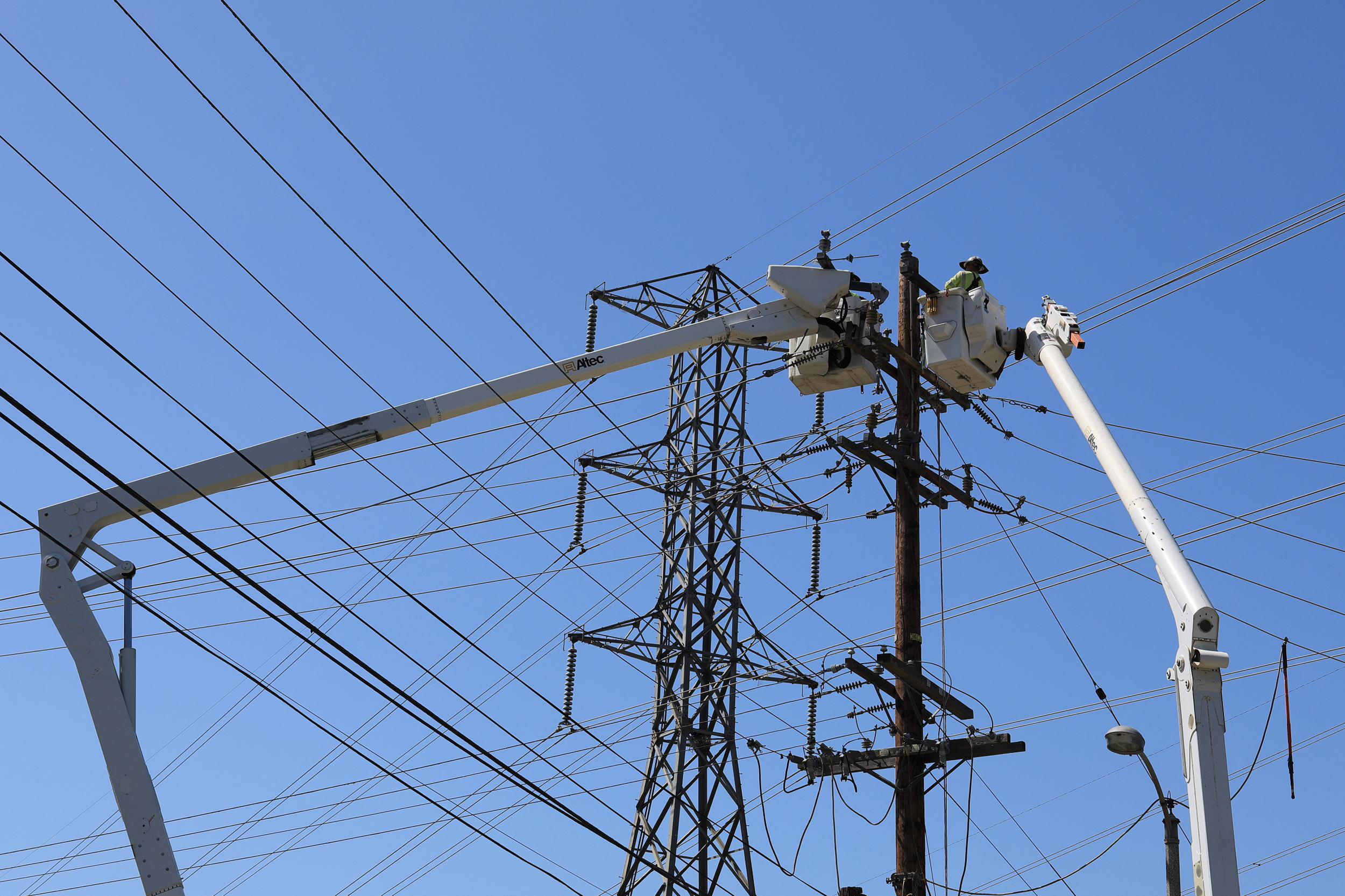

But LADWP rates are also likely to rise as the utility plans to increase capital spending by about $160 billion by 2045 to meet its climate goals. That could cause rates to double by 2030. While the utility has made progress on its climate goals, the hardest to decarbonize portions of the grid lie ahead, which are the most expensive to address. “I think the big cost is certainly yet to come,” said Gregory Pierce, senior director of UCLA’s Luskin Center for Innovation. “They haven’t fully decided what technology to use for the last 15 percent of renewables yet.”
“There has been a lot of spending that LADWP will have to do that the IOUs have already done,” said Rachel Sheinberg, a Ph.D. candidate at UCLA who studies the energy transition in Los Angeles.
That said, LADWP also faces legal uncertainty around Proposition 26, which requires voter approval for taxes and fees, and exempts utility rates only if they reflect the cost of providing service. That can lead to hesitation around spending on new climate initiatives and programs for low-income residents, said Sheinberg.
LADWP said in a statement that they’re managing the costs of the energy transition by leveraging the investments they’ve already made in transmission and distribution, using rolling requests for proposals for renewable developers, seeking out grants and using tax-exempt, long-term debt.
“Municipal utilities have generally lower rates than private utilities because municipal utilities don’t pay dividends or federal and state taxes,” said Riana Basuel, a spokesperson for LADWP. “LADWP, as a municipal utility, aims to provide essential customer services and design rates based on cost of service.”
Prosper, from the CPUC, said a recent law to let private utilities charge flat income-based monthly fees for grid maintenance as municipal utilities have long been allowed to do will bring IOU rates more in line with POU rates in the state.
Public utility buyouts are decades-long processes, often involving costly legal battles and expensive lobbying campaigns mounted by incumbent utilities. According to a January report from The Brattle Group consulting company, the vast majority of municipalization efforts over the past 25 years have been abandoned or rejected by voters because of the costs and risks involved.
The authors of the June UCLA report had some suggestions for how to tinker around the edges of the IOU model to lower rates and increase accountability without having to pursue a full scale takeover. These include selective public ownership of infrastructure, strengthened regulatory oversight and scaling back utility rates of return. California already took a step towards public financing of infrastructure this legislative session by approving SB 254, which set up a state financing program for transmission lines that one study said could save over $3 billion per year.
“There are a range of ways that more sort of public ownership and accountability can be injected into the investor-owned utility system,” said Lazenby. “I’d also be interested in a deeper conversation about what more public accountability would look like at the municipal utilities too.”
About This Story
Perhaps you noticed: This story, like all the news we publish, is free to read. That’s because Inside Climate News is a 501c3 nonprofit organization. We do not charge a subscription fee, lock our news behind a paywall, or clutter our website with ads. We make our news on climate and the environment freely available to you and anyone who wants it.
That’s not all. We also share our news for free with scores of other media organizations around the country. Many of them can’t afford to do environmental journalism of their own. We’ve built bureaus from coast to coast to report local stories, collaborate with local newsrooms and co-publish articles so that this vital work is shared as widely as possible.
Two of us launched ICN in 2007. Six years later we earned a Pulitzer Prize for National Reporting, and now we run the oldest and largest dedicated climate newsroom in the nation. We tell the story in all its complexity. We hold polluters accountable. We expose environmental injustice. We debunk misinformation. We scrutinize solutions and inspire action.
Donations from readers like you fund every aspect of what we do. If you don’t already, will you support our ongoing work, our reporting on the biggest crisis facing our planet, and help us reach even more readers in more places?
Please take a moment to make a tax-deductible donation. Every one of them makes a difference.
Thank you,






